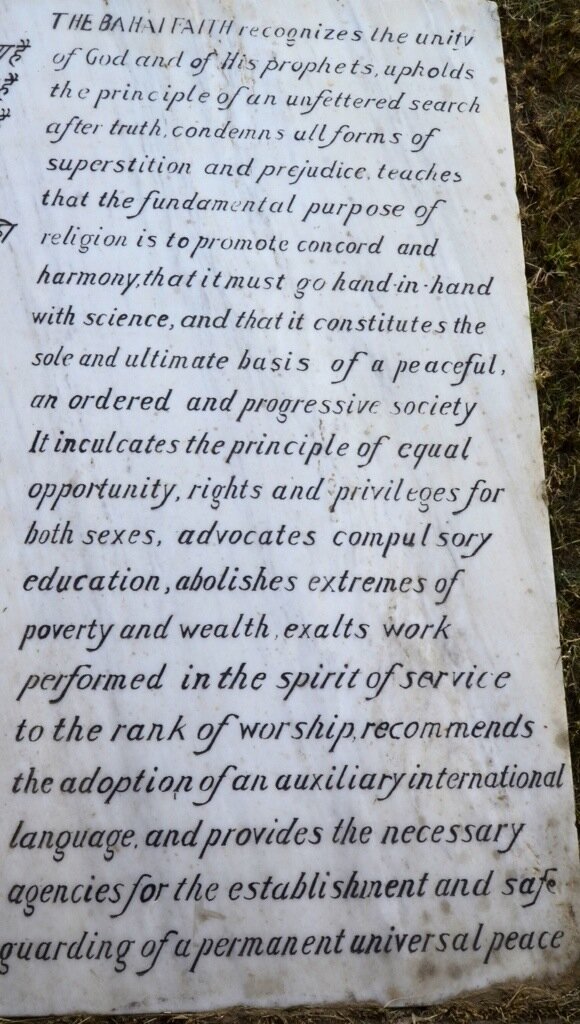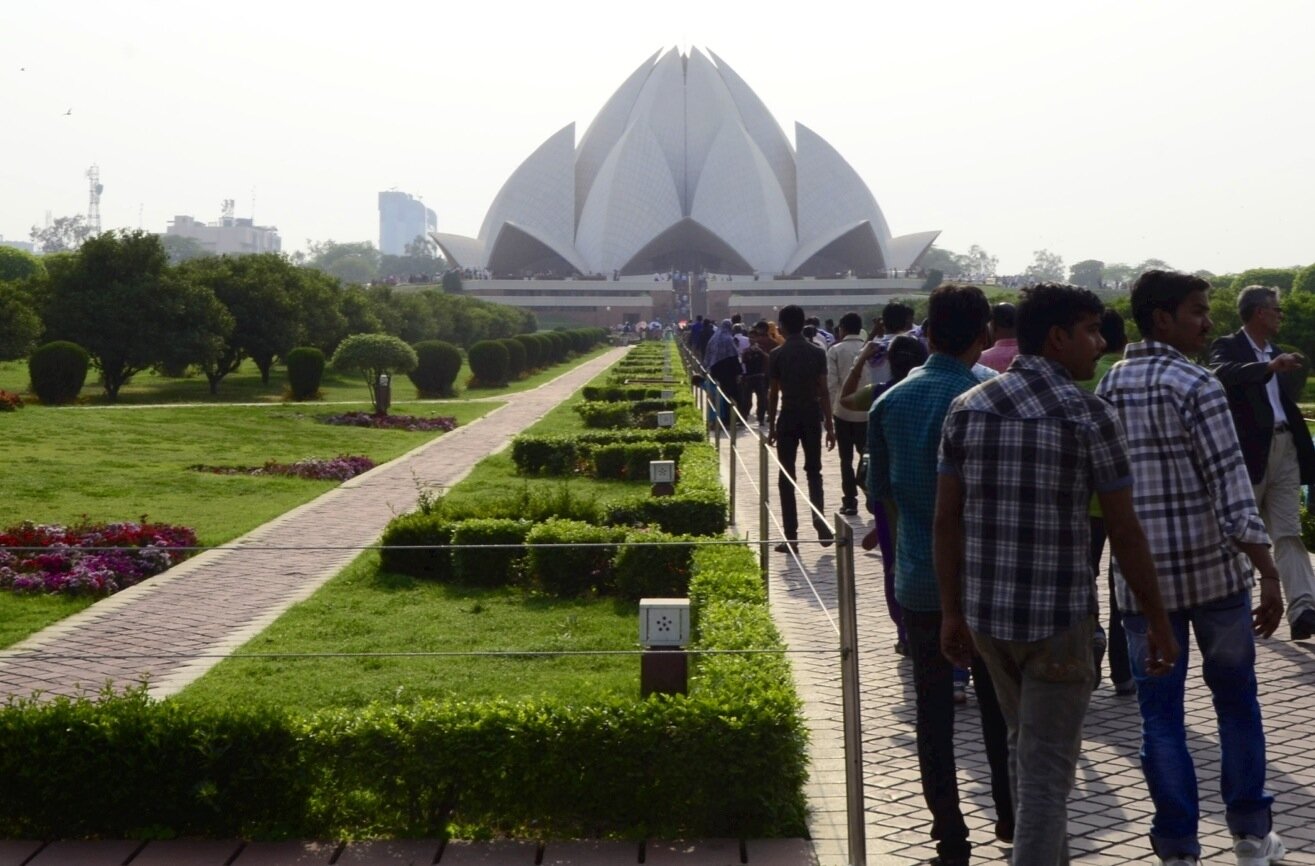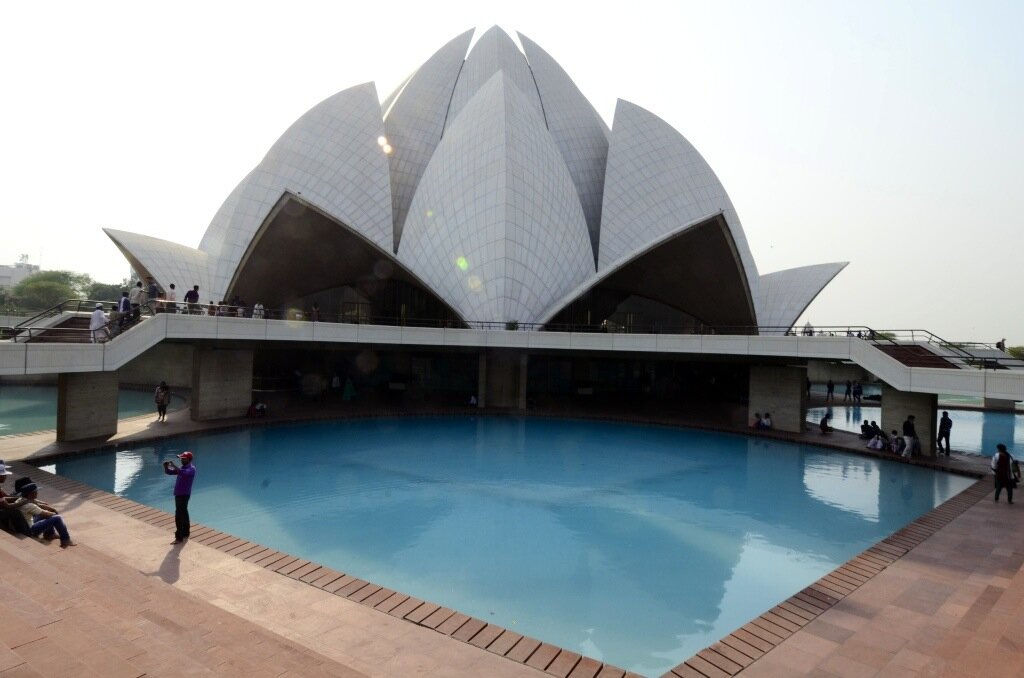David's Observations on Enlightenment
Did you hear the one about the nose on the guy in a rush who was staying in a hotel with a glass lobby door that was very very clean and clear?And then there is the one about the nose on the guy who, 10 days earlier, had dived head-first into a breaking wave in the surf while forgetting for the moment that the water on the far side of a breaking wave can get very shallow.Well, enough about me.On the road from Bharatpur (where we saw all the “bharats” and other birds) to New Delhi, we passed through a town called Mathura. Our driver pulled up in front of a large temple and suggested that we might like to go inside. He said it was a temple to Krishna, who had been born in Mathura, and that the guru at the temple had just died last year at the age of 115. There was a sign on the fence in front of the temple saying that all were welcome and that donations were permitted only by vegans in recovery.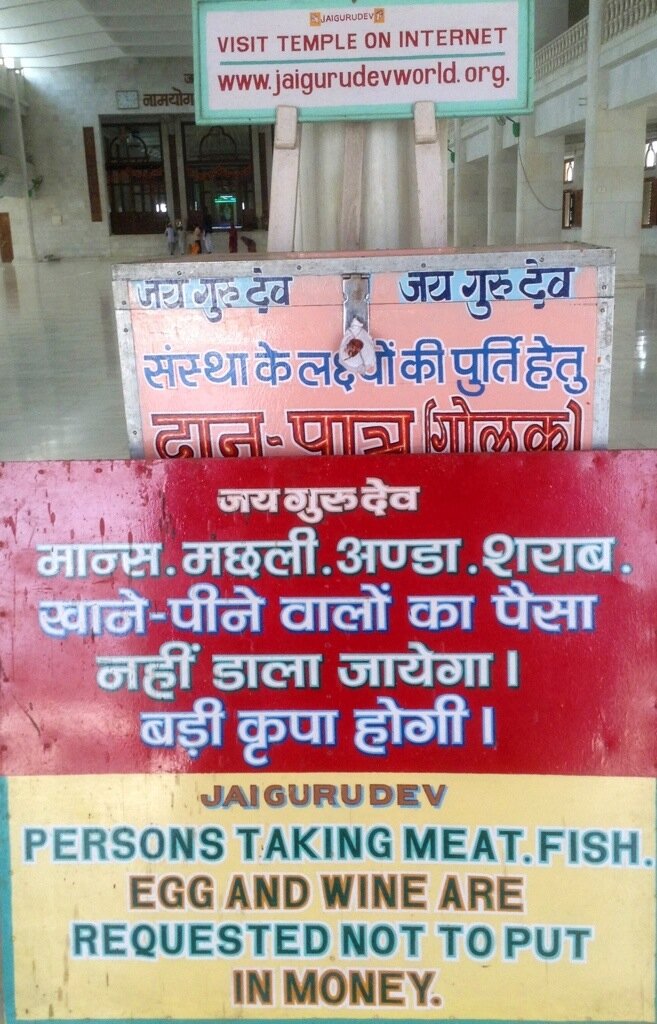
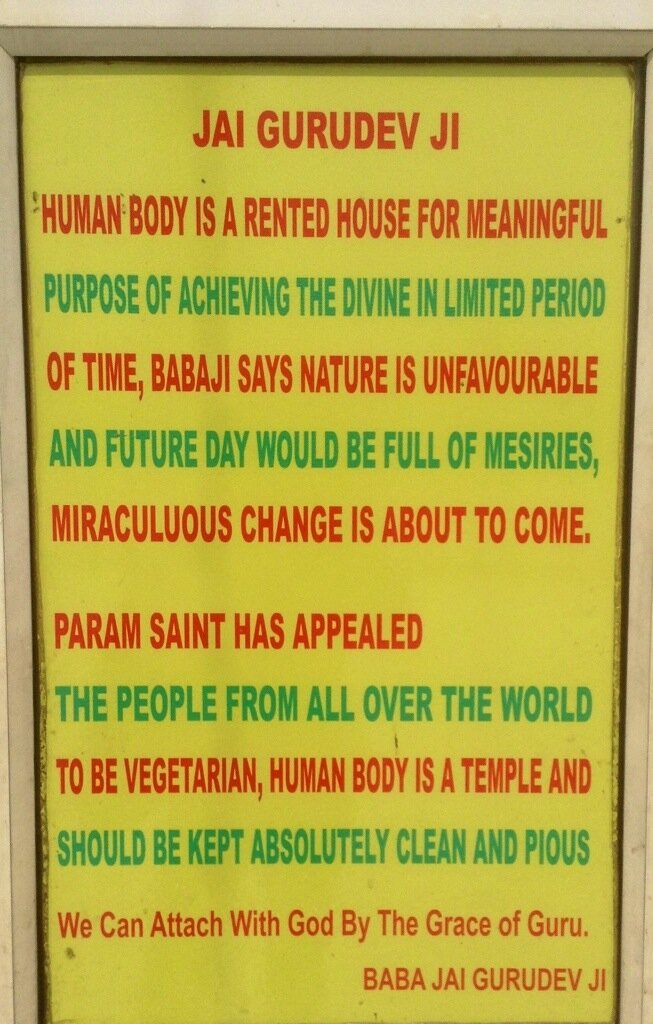 We left our shoes at the gate and entered the temple. It was new, made of white marble. The interior was cavernous and unadorned. When we left and retrieved our shoes, the man handed us a paper with printing on both sides, with the request:"Please read. Do not throw away." Here are some excerpts from the guru's messages: "First, be a vegetarian. Don't take flesh and egg.... Don't kill any animal, any living creature or man. The pain which we feel, they also feel the same...."Secondly, don't take intoxicants that may inebriate you to such an extent that you fail to recognize your mother, sister or daughter...."Thirdly, honesty and hard work are required every where. It grants you prosperity and pleasure. It will never make you impoverished. What more do you need? ..."Note:- Please don't throw this paper bearing the message of this saint, read it your self thoroughly and deeply and make it available to be read by others."So we did not throw the paper away, and we now make it available to be read by you. Hare Krishna.
We left our shoes at the gate and entered the temple. It was new, made of white marble. The interior was cavernous and unadorned. When we left and retrieved our shoes, the man handed us a paper with printing on both sides, with the request:"Please read. Do not throw away." Here are some excerpts from the guru's messages: "First, be a vegetarian. Don't take flesh and egg.... Don't kill any animal, any living creature or man. The pain which we feel, they also feel the same...."Secondly, don't take intoxicants that may inebriate you to such an extent that you fail to recognize your mother, sister or daughter...."Thirdly, honesty and hard work are required every where. It grants you prosperity and pleasure. It will never make you impoverished. What more do you need? ..."Note:- Please don't throw this paper bearing the message of this saint, read it your self thoroughly and deeply and make it available to be read by others."So we did not throw the paper away, and we now make it available to be read by you. Hare Krishna.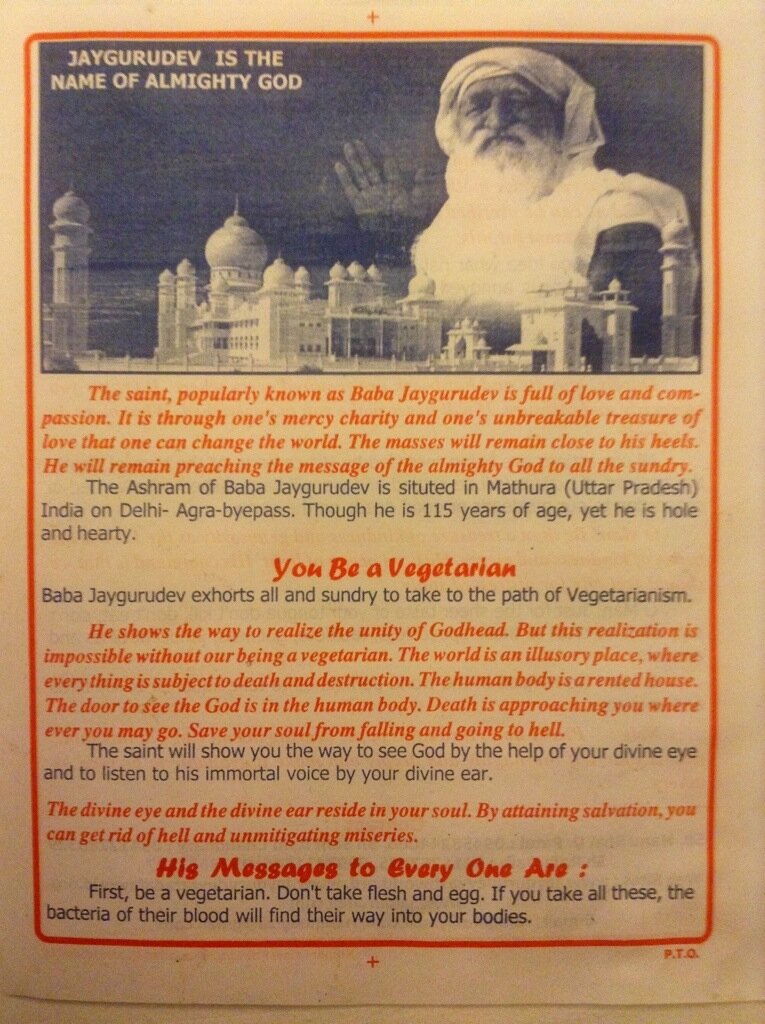
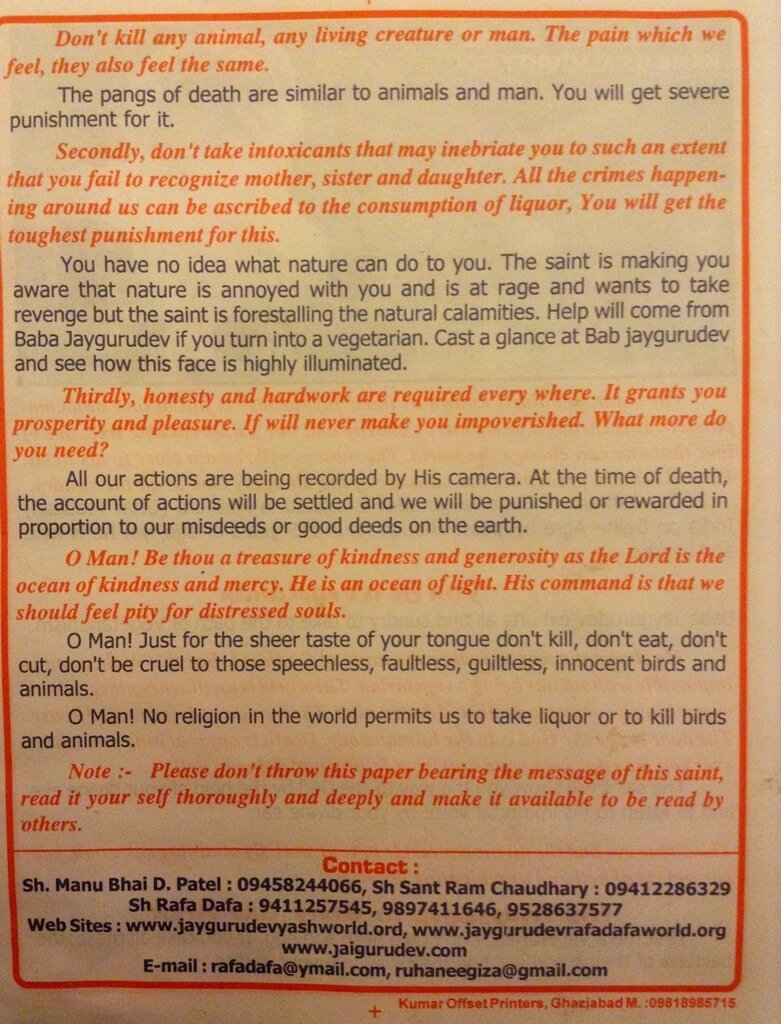 We got an introduction to another religion a couple of days ago when we visited the "Lotus Temple", which is the Bahai temple in New Delhi. We went to visit the temple as a tourist site, and it is a "must see" for every visitor. The exterior of the temple is something like the Sydney Opera House, with soaring free-standing concrete shells. The temple has 27 of them that form the petals of a giant lotus blossom that creates, in turn, a central hall capable of seating 2,500 people on a single level.The beauty of the building and the precepts of the Bahai faith that we saw on various inscriptions made us come back the following day for a service. It consisted of individuals going up to a lectern and reading prayers from the Bahai holy writings and also from Hinduism, Buddhism, Islam, and the Old and New Testaments. The sound was other-worldly because of the echo of the readings within the huge hall. It was not an echo of the spoken words themselves. It was a reverberation of the pitch and tone of the speaker's words that created the sensation of being inside an immense pipe organ.The story of the construction of the temple is just as compelling as the structure itself. In contrast to the Sydney Opera House (whose shells are precast concrete forms supported by precast concrete beams), the temple's shells were poured onsite. That may not sound like much. However, each shell had to be created with a single concrete pour, and the central petals extend more than 120 feet above their base. That translated into a 24/7 concrete pour that lasted 14 days for each "petal". Once the concrete work was finished, the petals were clad with marble from the same quarry in Greece that is said to have provided the marble for the Parthenon.And most of the work in the concrete pours and the rest of the construction was done by hand, including the excavation of the site. Men dug out the site with picks and shovels, and women carried the dirt and stones off the site in large baskets balanced on their heads. Each woman is said to have carried several tons of dirt and stone each day. Like the pyramids, but this was all done in the mid-1980s and (except for volunteers who came from around the world) these laborers were paid wages, albeit at rates that would shock and distress many of us.One other thing struck me about the temple. In the temple's information center there are about 12 - 15 large display panels, each containing a quotation from a different religion's holy writings that illustrate Bahai’s principle of the unity of all religions. The quotation from Christianity is the prayer "You shall love the Lord your God with all your heart, with all your soul, and with all your might..." I couldn't understand this prayer being attributed to Christianity because I've always known it as Judaism’s Shema Yisrael. So I "googled" (forgive me all you Google IP lawyers) the quoted language and found that it also appears in Mark (12:30), Matthew (22:37) and Luke(10.27). Talk about the unity of religions!
We got an introduction to another religion a couple of days ago when we visited the "Lotus Temple", which is the Bahai temple in New Delhi. We went to visit the temple as a tourist site, and it is a "must see" for every visitor. The exterior of the temple is something like the Sydney Opera House, with soaring free-standing concrete shells. The temple has 27 of them that form the petals of a giant lotus blossom that creates, in turn, a central hall capable of seating 2,500 people on a single level.The beauty of the building and the precepts of the Bahai faith that we saw on various inscriptions made us come back the following day for a service. It consisted of individuals going up to a lectern and reading prayers from the Bahai holy writings and also from Hinduism, Buddhism, Islam, and the Old and New Testaments. The sound was other-worldly because of the echo of the readings within the huge hall. It was not an echo of the spoken words themselves. It was a reverberation of the pitch and tone of the speaker's words that created the sensation of being inside an immense pipe organ.The story of the construction of the temple is just as compelling as the structure itself. In contrast to the Sydney Opera House (whose shells are precast concrete forms supported by precast concrete beams), the temple's shells were poured onsite. That may not sound like much. However, each shell had to be created with a single concrete pour, and the central petals extend more than 120 feet above their base. That translated into a 24/7 concrete pour that lasted 14 days for each "petal". Once the concrete work was finished, the petals were clad with marble from the same quarry in Greece that is said to have provided the marble for the Parthenon.And most of the work in the concrete pours and the rest of the construction was done by hand, including the excavation of the site. Men dug out the site with picks and shovels, and women carried the dirt and stones off the site in large baskets balanced on their heads. Each woman is said to have carried several tons of dirt and stone each day. Like the pyramids, but this was all done in the mid-1980s and (except for volunteers who came from around the world) these laborers were paid wages, albeit at rates that would shock and distress many of us.One other thing struck me about the temple. In the temple's information center there are about 12 - 15 large display panels, each containing a quotation from a different religion's holy writings that illustrate Bahai’s principle of the unity of all religions. The quotation from Christianity is the prayer "You shall love the Lord your God with all your heart, with all your soul, and with all your might..." I couldn't understand this prayer being attributed to Christianity because I've always known it as Judaism’s Shema Yisrael. So I "googled" (forgive me all you Google IP lawyers) the quoted language and found that it also appears in Mark (12:30), Matthew (22:37) and Luke(10.27). Talk about the unity of religions!